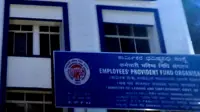Religion and politics led to social tension and conflict 2,000 years ago
29 Dec 2015
Humans haven't learned much in 2,000 years when it comes to religion and politics.
Religion has led to social tension and conflict not just in today's society but dating back to 700 BC, according to a new study published today in Current Anthropology.

University of Colorado anthropology Professor Arthur A. Joyce and University of Central Florida (UCF) Associate Professor Sarah Barber found evidence in several Mexican archeological sites that contradict the long-held belief that religion acted to unite early state societies. It often had the opposite effect, the study said.
''It doesn't matter if we today don't share particular religious beliefs, when people in the past acted on their beliefs those actions could have real, material consequences,'' Barber says of the team's findings. ''It really behooves us to acknowledge religion when considering political processes.''
The team published its findings Ensoulment, Entrapment, and Political Centralization: A Comparative Study of Religion and Politics in Later Formative Oaxaca''after spending several years conducting field research in the lower Río Verde Valley of Oaxaca, Mexico's Pacific coastal lowlands. They compared their results with data from the highland Valley of Oaxaca.
They looked at archaeological evidence from 700 B.C. to A.D. 250, a period identified as a time of the emergence of states in the region. In the lower Verde, religious rituals involving offerings and the burial of people in cemeteries at smaller communities created strong ties to the local community that impeded the creation of state institutions.
And in the Valley of Oaxaca, elites became central to mediating between their communities and the gods, which eventually triggered conflict with traditional community leaders. It culminated in the emergence of a regional state with its capital at the hilltop city of Monte Albán.
''In both the Valley of Oaxaca and the Lower Río Verde Valley religion was important in the formation and history of early cities and states but in vastly different ways,'' says Joyce, lead author on the study. ''Given the role of religion in social life and politics today, that shouldn't be too surprising."
The conflict in the lower Río Verde valley is evident in the rapid rise and fall of its state institutions. At Río Viejo, the capital of the lower Verde state, people built massive temples by AD 100 yet these impressive, labour-intensive buildings, along with many towns throughout the valley, were abandoned a little over a century later.
''An innovative aspect of our research is to view the burials of ancestors and ceremonial offerings in the lower Verde as essential to these ancient communities,'' says Joyce, whose research focuses on both political life and ecology in ancient Mesoamerica. ''Such a perspective is also more consistent with the world views of the Native Americans who lived there.''
Barber is an associate professor at UCF specialising in the archaeology of Mesoamerica. She received her Ph.D. from the University of Colorado Boulder in 2005 and joined the UCF faculty in 2007. The central goal of her research is to understand the various processes that enabled and constrained early political centralization. Her fieldwork has been funded by the National Science Foundation, the National Geographic Society and the Religion and Innovation in Human Affairs program.
Joyce, whose research has been funded by the National Science Foundation and the Religion and Innovation in Human Affairs Program, which is funded in part by the John Templeton Foundation, is the author of Mixtecs, Zapotecs, and Chatinos: Ancient Peoples of Southern Mexico.

































